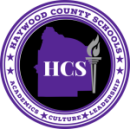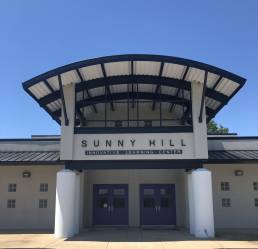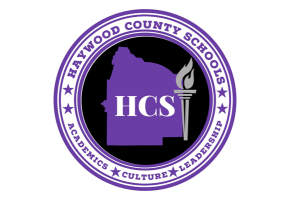Sunny Hill – Reflections
In the world of education, July is the page turning month; the month that starts with a deep exhale and some relaxation then ends with the opening of schools once again for teachers and students. July is a time to look back on the successes of the previous school year, fine tune what worked well, and change what didn’t. It’s a time for everyone in the district to catch their collective breath before the wave of teaching and learning begins to build anew.
Over the course of a week in June, each principal in Haywood County Schools (HCS) sat down and reflected on the 2021-2022 school year. They discussed the challenges of the first year of full, in-person learning since 2018-2019. They reflected on their school’s academic successes and looked honestly at areas of needed improvement. Each principal, without exception, praised their faculty and staff and understood the challenges that come with being a classroom teacher. They also discussed tangible ways to positively impact learning during the 2022-2023 school year.
Every school leader and every school brings something unique to the district of HCS. From Anderson Early Childhood Center all the way to Haywood High School, the buildings and staff that make each school what it is are shaped by the administrative teams on each campus and the invaluable work that each classroom teacher performs every single day.
 For students and staff at Sunny Hill Intermediate School, last school year was a year of firsts. First year back to full time, in-person learning since 2018. First year as a principal for Alex Aitken. First year as assistant principals for the two AP’s at Sunny Hill. First year as a school counselor for Tamika Pickens.
For students and staff at Sunny Hill Intermediate School, last school year was a year of firsts. First year back to full time, in-person learning since 2018. First year as a principal for Alex Aitken. First year as assistant principals for the two AP’s at Sunny Hill. First year as a school counselor for Tamika Pickens.
With any school with that many “firsts” there is bound to be a lot of experiential learning that took place over the course of the year. For Principal Aitken, that was definitely the case.
“Everything was new this year – new team, new counselors, new administration,” he said. “When I left the classroom several years ago, I said ‘I can learn more in 6 months as an Assistant Principal than I can staying in the classroom.’ This feels similar to that – learning by experience. My growth scale has been accelerated once again. I’ve had to learn so much.”
Not only did Alex and his team have to learn a lot on the fly, they were learning it in a school that was full of fifth and sixth grade students. The intermediate school concept has a lot of advantages, and Sunny Hill did their best to capitalize on those advantages during the year.
“SHIS is unique because we only have fifth and sixth grade students at our school,” Alex said. “I think some parents find relief in that – that their students aren’t around older kids like a traditional middle school.”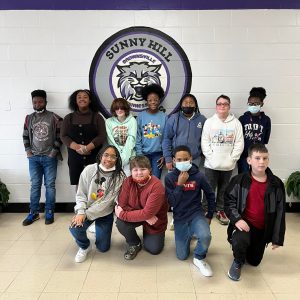
Navigating some choppy waters during the school year allowed Alex and his team to learn some valuable lessons and plan for effective ways to build on the school culture that was established this year. Because Alex knew this year would be challenging, he wanted to focus on teachers and their needs throughout the school year.
“With kids coming back to school for the first time in a long time, I wanted to take care of the teachers so they could take care of the kids. We set up some times during the year where I sat down with every teacher and asked for honest feedback. I really wanted to build the culture here,” he explained. “We had the talent show, the career fair. We had five colleges and 15 industries that showed up. We really wanted to expose our students to things outside of Brownsville.”
As Alex and his team look ahead to the 2022-2023 school year, a shift in behavioral philosophy is occurring.
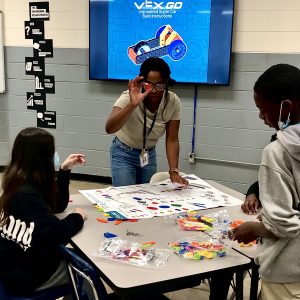 Often, people outside of public education believe that school discipline should look a certain way; that students should and will follow the rules and procedures that the school places in front of them…no questions asked. While that scenario is idyllic, it’s not realistic. Students need relationships built on trust with teachers as well as acknowledgement for doing the right thing.
Often, people outside of public education believe that school discipline should look a certain way; that students should and will follow the rules and procedures that the school places in front of them…no questions asked. While that scenario is idyllic, it’s not realistic. Students need relationships built on trust with teachers as well as acknowledgement for doing the right thing.
SHIS is adopting a positive behavior model that is also used by Haywood Middle School. HMS has seen great success using the model known as RTI-Squared B. This will allow the students at SHIS to learn the expectations and procedures that will also translate to their middle school years at HMS. More importantly, it will help to continue to build the culture at SHIS.
“Next year – now that we’ve laid a foundational playbook – we’ll know what our common expectations are for teachers and students in the building. We’ve modified our schedule some to be more effective,” Alex explained. “We’re also instituting a school-wide positive behavior plan. We can’t punish our way out of anything. We need to reward that positive behavior.”
The main thrust of any positive behavior based program is to build habits of good behavior and making good choices. No adult who is employed would do their job for free; they may love their work, but they also show up every day because they are compensated for doing a job. Students are the same way. And, while they won’t be compensated monetarily for attending school and following rules and procedures, they will be rewarded for that.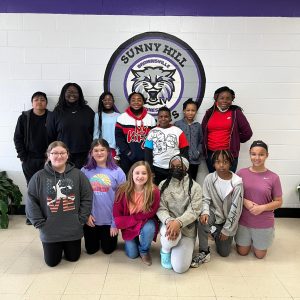
“Positive behavior boils down to the idea that people do what they want to do. Teachers come to school because they love to teach, but mainly they keep showing up because they get paid; it’s their job. We’re rewarded for doing what we’re supposed to do. Our kids are the same way. We want to reward them for doing what they’re supposed to do. That’s how good habits are built,” Alex said.
SHIS has instituted a simple acronym to help students remember the procedures that are in place and to exhibit the behaviors that match school wide expectations.
“We’ll use the acronym PAWS for our expectations for students – PRIDE in school, have the right ATTITUDE, WISE choices, and do things SAFELY,” Alex said.
As SHIS administration, staff, and students embark on their second year, there are plenty of systems and structures in place to strengthen the culture of the school. Above all, however, Alex wants his students to make the best decision possible in any given moment.
“We tell our kids at every point there’s a decision to make, just make the best one you can in the moment.”
